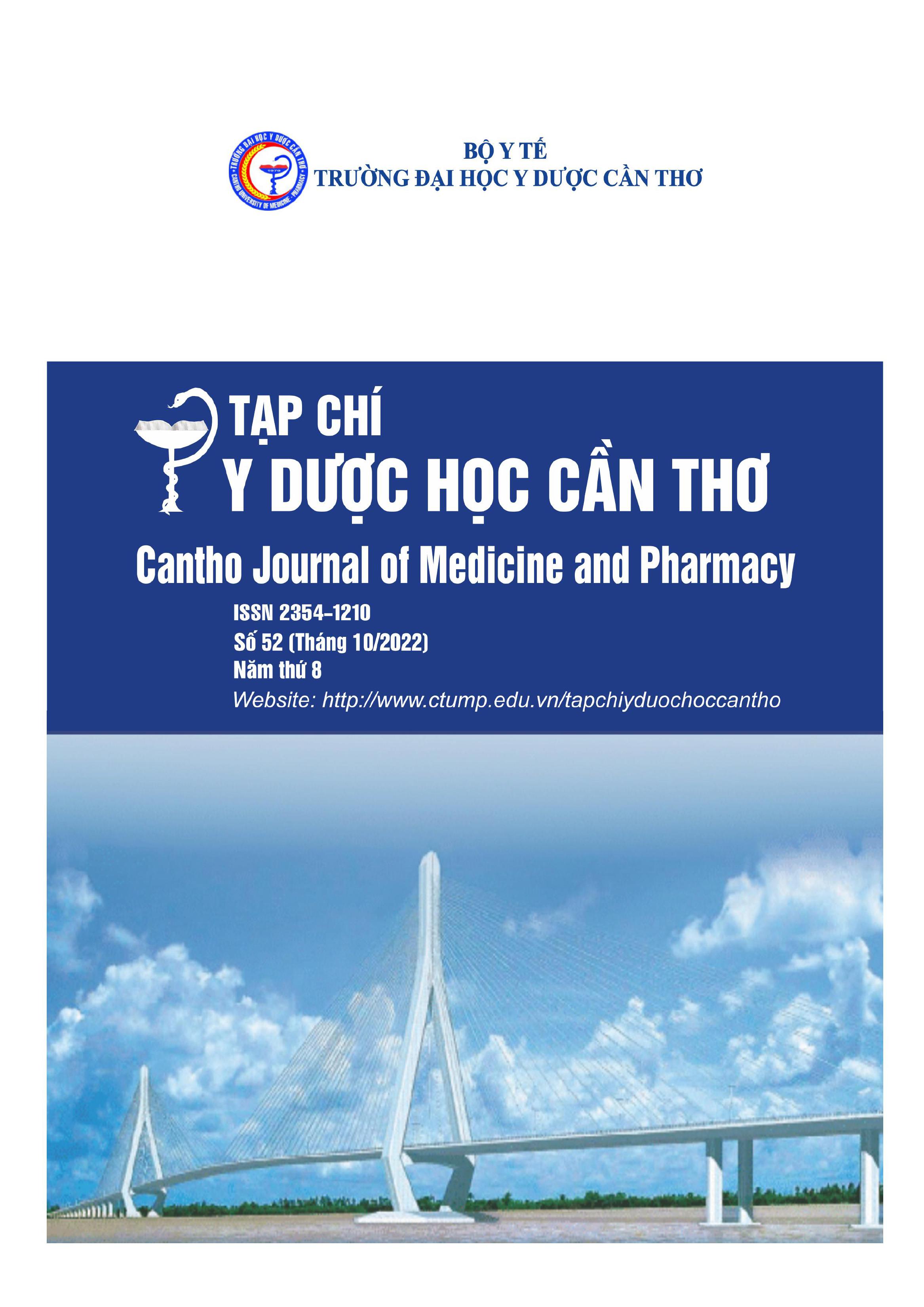ĐẶC ĐIỂM HÌNH ẢNH THỦNG DẠ DÀY TÁ TRÀNG TRÊN X-QUANG CẮT LỚP ĐIỆN TOÁN
Nội dung chính của bài viết
Tóm tắt
Đặt vấn đề: X-quang cắt lớp điện toán (XQCLĐT) ngày càng được sử dụng phổ biến trong khảo sát bệnh nhân nghi ngờ thủng dạ dày tá tràng (DDTT). Gần đây, nhiều dấu chứng mới giúp xác định vị trí ổ thủng đã được mô tả. Mục tiêu nghiên cứu: Khảo sát đặc điểm hình ảnh của thủng dạ dày tá tràng trên X-quang cắt lớp điện toán. Đối tượng và phương pháp nghiên cứu: Nghiên cứu gồm 34 trường hợp thủng dạ dày tá tràng được xác định trong mổ, tại Bệnh viện Hoàn Mỹ Sài Gòn, từ tháng 10/2019 đến tháng 9/2021. Tất cả phim X-quang cắt lớp điện toán bụng có tiêm cản quang tĩnh mạch và X-quang bụng đứng không sửa soạn của bệnh nhân chụp trong vòng 12 giờ trước mổ được hồi cứu lại. Kết quả: Tuổi trung bình 52,2±21,5 với tuổi nhỏ và lớn nhất lần lượt là 16 và 88. Nguyên nhân thủng là loét tiêu hóa (94,1%), u dạ dày (2,9%), do dị vật tiêu hóa (2,9%). Trên X-quang cắt lớp điện toán, 4 dấu hiệu thường gặp nhất của thủng dạ dày tá tràng với tần suất giảm dần: (1) Mất liên tục thành dạ dày tá tràng (97,1%), (2) Khí tự do ổ bụng (97,1%), (3) Dày thành dạ dày tá tràng cạnh ổ thủng (88,2%), (4) Dịch tự do ổ bụng (73,5%). Các vị trí chuyên biệt của khí tự do trong thủng dạ dày tá tràng theo tần suất giảm dần là: (1) Quanh vòm gan (79,4%), (2) Rốn gan (73,5%), (3) Cạnh dây chằng liềm (64,7%), (4) Cạnh ổ thủng (64,7%). Kết luận: Các dấu hiệu quan trọng của thủng dạ dày tá tràng trên X-quang cắt lớp điện toán với tần suất giảm dần là: (1) Mất liên tục thành dạ dày tá tràng, (2) Khí tự do ổ bụng, (3) Dày thành dạ dày tá tràng cạnh ổ thủng và (4) Dịch tự do ổ bụng.
Chi tiết bài viết
Từ khóa
Thủng dạ dày tá tràng, X-quang cắt lớp điện toán
Tài liệu tham khảo
2. Celik H et al. (2021), Accuracy of specific free air distributions in predicting the localization of gastrointestinal perforations. Emergency Radiology.
3. Cho HS et al. (2009), Distinction between upper and lower gastrointestinal perforation: Usefulness of the periportal free air sign on computed tomography. Eur J Radiol, 69(1), pp.108-13.
4. Choi AL et al. (2011), What determines the periportal free air, and ligamentum teres and falciform ligament signs on CT: Can these specific air distributions be valuable predictors of gastroduodenal perforation?. Eur J Radiol, 77(2), pp.319-24.
5. Drakopoulos D et al. (2021), Correlation of gastrointestinal perforation location and amount of free air and ascites on CT imaging. Abdom Radiol (NY), 46(10), pp.4536-4547.
6. Grassi R et al. (2004), Gastro-duodenal perforations: Conventional plain film, US and CT findings in 166 consecutive patients. Eur J Radiol, 50(1), pp.30-6.
7. Hainaux B et al. (2006), Accuracy of MDCT in predicting site of gastrointestinal tract perforation. AJR Am J Roentgenol, 187(5), pp.1179-83.
8. Kim HC et al. (2014), Gastrointestinal tract perforation: Evaluation of MDCT according to perforation site and elapsed time. European Radiology, 24(6), pp.1386-1393.
9. Lee D et al. (2016), Multidetector CT diagnosis of non-traumatic gastroduodenal perforation. J Med Imaging Radiat Oncol, 60(2), pp.182-6.
10. Lee NK et al. (2020), CT diagnosis of non-traumatic gastrointestinal perforation: An emphasis on the causes. Jpn J Radiol, 38(2), pp.101-111.
11. Nouri D et al. (2021), Effects of sex, age, size and location of perforation on the sensitivity of erect chest X-ray for gastroduodenal perforation. Radiography, 27(4), pp.1158-1161.
12. Oguro S et al. (2010), 64-Slice multidetector computed tomography evaluation of gastrointestinal tract perforation site: Detectability of direct findings in upper and lower GI tract. Eur Radiol, 20(6), pp.1396-403.
13. Toprak H et al. (2019), Multidetector CT findings in gastrointestinal tract perforation that can help prediction of perforation site accurately. Clin Radiol, 74(9), pp.736.e1-736.e7.


